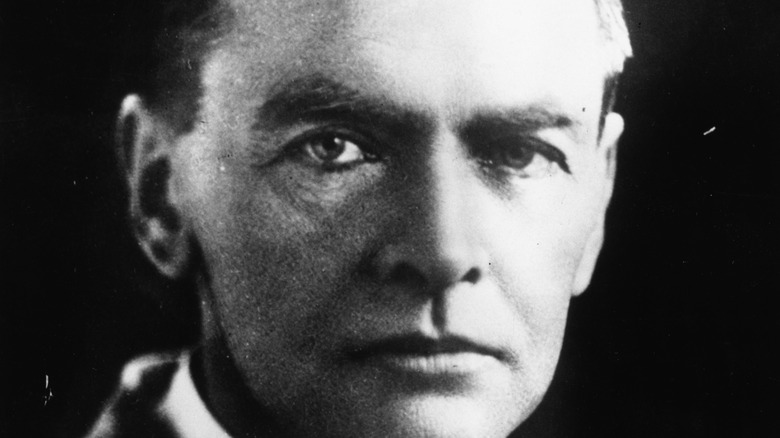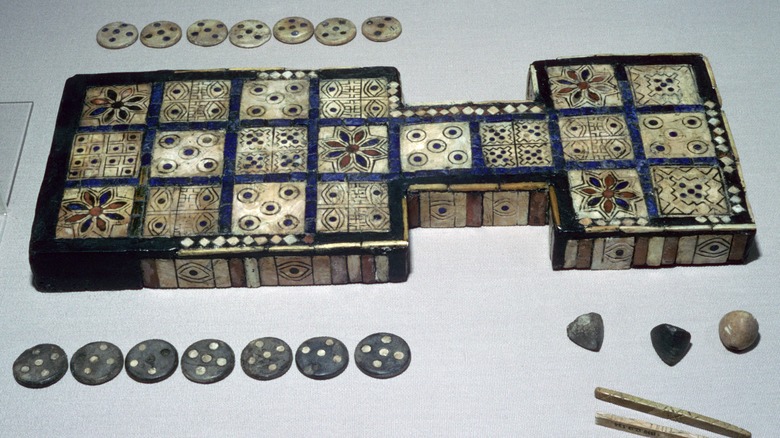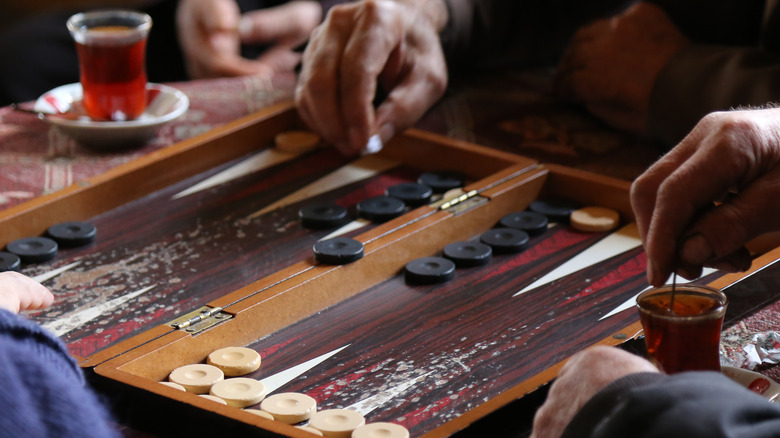The Untold Truth Of The Oldest Known Board Game
Throughout the 1920s, an archeologist with a slim build, perpetually-furrowed brow, and unquenchable historical curiosity, spent his days in Southern Iraq digging, searching, uncovering. Sir Leonard Woolley rarely slept when he was on his digs, so engrossed in his work, that he rose with the sun and could often be found in his study or catalog room mulling over discoveries until 2 or 3 a.m. (via Penn Museum).
Woolley committed a total of 13 years systematically excavating the ancient Sumerian city of Ur. He was known for meticulously tracking everything he found in large, definitive publications written with the same feverish passion he carried onto his digs. Woolley's discoveries advanced our modern-day understanding of ancient Mesopotamian civilization and, according to Brittanica, "revealed much about everyday life, art, architecture, literature, government, and religion in what has come to be called 'the cradle of civilization.'"
One such discovery which took place during this ground-breaking dig — pun intended — is a little more accessible than most archeological artifacts, in fact, you can even find a version of it on Amazon. Thanks to Sir Leonard Woolley, we can replicate family-friendly competitions from ancient Sumerian times in the form of a nearly 5,000-year-old board game called the "Royal Game of Ur."
The national board game of ancient Mesopotamia
Although Sir Leonard Woolley is credited with this discovering this ancient board game, it is Dr. Irving Finkle, a curator of cuneiform for the British Museum, who was able to uncover the rulebook. Finkle, who is the most curator-looking curator who ever lived, spent the majority of his career deciphering the British Museum's 130,000 clay tablets featuring cuneiform inscriptions. It is inside one of those tablets, that Finkle found the rule book for the "Royal Game of Ur" or as he puts it in the pilot of a delightfully amusing YouTube series called Curator's Corner via The British Museum.
For "International Tabletop Day" in 2017, Finkle challenged British YouTuber and game developer, Tom Scott, to play against him using the oldest playable board game in the world (per YouTube). According to Finkle, each person has seven playing pieces and their objective is to be the first to move all of their pieces from their respective starts to their respective finish lines — both on opposite sides of the board.
Out with the old in with the new
Finkle explained the game in a YouTube video, saying players use a set of D4 dice determine how far (and whether) they can move their pieces up the board. If a player lands on space with their opponent's piece, they are able to knock it off the board, forcing the opponent to start over with that particular piece. If an opponent lands on a square with a floral design, they gain a second throw, and if they land on the centerpiece with a floral design, their opponent cannot knock them off the board.
If this list of instructions sounds familiar, it's because there are many games that took inspiration from this one, including "Backgammon," a game spread by the Romans, per Brittannica. The "Royal Game of Ur" may be long-forgotten, but, its influence is undeniable. Remnants of "Royal Game of Ur" gameplay can be found in timeless board and modern-day board games alike. So, take note, Wordle, you've got some catching up to do.


